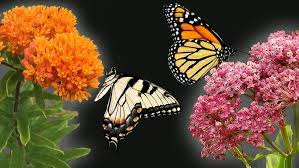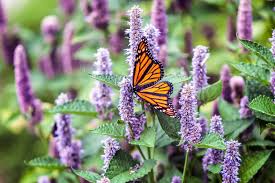Spending time in a garden during the summer can be a truly delightful experience, especially when butterflies, often called “flowers that fly,” join the scene. These colorful insects are a joy to watch, and they grace temperate and tropical gardens all over the world. Butterflies are harmless, as they lack the ability to bite or sting. However, their larvae, or caterpillars, are another story—since all butterflies begin their life cycle as leaf-eating caterpillars.
Luckily, most butterfly species don’t target edible plants as their larval host plants. For example, cabbage white butterflies lay eggs on cabbage, turning them into green cabbageworms, while tomato hornworms are the larvae of a large moth. Both can be easily managed by hand-picking or using a Bacillus thuringiensis (Bt) insecticide. Another common caterpillar found in gardens is the parsleyworm, the larva of the black swallowtail butterfly. While it may munch on plants like fennel or parsley, its beauty as an adult butterfly makes it worth tolerating in small numbers. I’ve personally had the pleasure of observing a parsleyworm spin its cocoon, later emerging as a stunning black swallowtail ready for its first flight.

Attracting butterflies to your garden is simple—just grow flowers that provide nectar. These flowers supply the nutrients butterflies need, which they sip using their proboscis, a straw-like organ. Butterflies prefer flowers with flat petals or leaves for stable footing, making it easier for them to balance as they drink. Popular butterfly-friendly flowers include echinacea, monarda, and zinnia. Flowers that cluster tightly on strong stems, like butterfly bushes, lantanas, and verbena, are also great for attracting butterflies.
Interestingly, some plants we might consider weeds are actually butterfly favorites. Thistles, for example, are powerful magnets for butterflies, but they must be cut down before they produce seeds. Milkweed is another essential plant that I let grow in my garden. Not only does it provide nectar, but it’s the preferred host plant for monarch butterflies. As their population declines due to urbanization and agricultural practices, these small patches of milkweed can be a crucial resource for monarchs, offering a safe place for them to lay eggs and find food.

For butterflies to thrive, it’s important to provide not just nectar, but also host plants for their larvae. Willows and poplar trees are excellent host plants for various butterfly species. Fortunately, these trees are resilient and can handle the loss of a few leaves due to caterpillar feeding. Some butterfly species are even able to adapt to a variety of host plants, showcasing their incredible ability to survive in changing environments.
By growing a mix of nectar-rich flowers and host plants, you can create a welcoming environment for butterflies in your garden, contributing to their conservation and enjoying the beauty they bring to your outdoor space.
